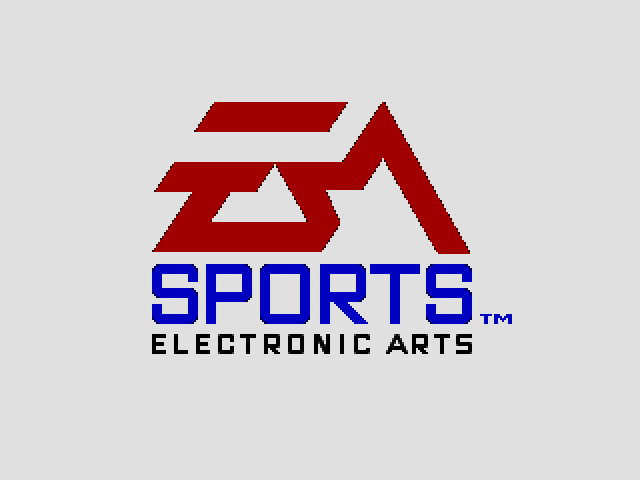
When EA Sports’ NHL Hockey debuted on the Sega Genesis in the fall of 1991, it turned the hockey video game genre on its ear. Prior to NHL Hockey, games like Ice Hockey and Blades of Steel had given console gamers a taste of pixelated hockey, but those early attempts left a lot to be desired from a realism standpoint.
In contrast, NHL Hockey was a revelation for its time. The game featured all 22 NHL teams (and two all-star teams) complete with the proper team names and colors. It also featured a level of realism that was unheard of at the time, with five skaters a side, proper penalties, offsides, icing and all of the basic rules of real NHL hockey. Additionally, although the game lacked an NHLPA license, the game’s unnamed players were nevertheless based on their real-life counterparts, with each player modeled on 14 different attributes designed to mimic the real player’s strengths and weaknesses.
Simply put, NHL Hockey did for video game hockey what Madden did for video game football, bringing a new level of authenticity to the game. These were the games that truly represented EA’s famous “If it’s in the game, it’s in the game” slogan.
I was 16 when the game was released and for the most part I’d outgrown video games. But when I witnessed NHL Hockey in action, I had to have it. The game single-handedly sold me on purchasing a Genesis, and with that a lifelong love affair with sports gaming was born.
The game’s sequel, released the following year on both the Genesis and the Super NES, built on its predecessor’s success by introducing an NHLPA license, which meant gamers could actually control Wayne Gretzky, Mario Lemieux, Jaromir Jagr and all of their heroes. NHLPA Hockey 93 also introduced player injuries and the ability to edit lines, as well as a variety of gameplay and AI enhancements. Unfortunately, the game didn’t feature the NHL license, meaning while you could now control future NHL 20 commentator Ray Ferraro, you were forced to do so while using a generic “Long Island” team rather than the New York Islanders.
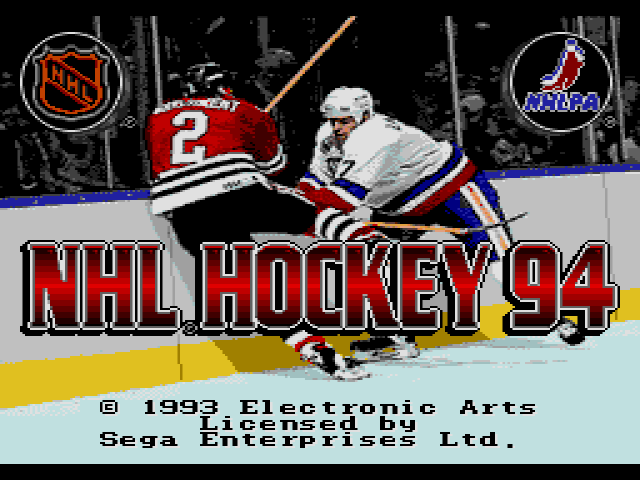
It was NHL 94 that finally brought the whole package together, creating a game that many still regard as one of the greatest hockey video games of all time. The inclusion of both the NHL and NHLPA licenses, along with the addition of expansion teams like the Mighty Ducks of Anaheim (as they were known at the time) and Florida Panthers made the game the truest representation of NHL hockey ever available on a video game console.
NHL 94 also added a number of other features that would go on to become staples in hockey video games, perhaps most notably one timers, which immediately became a highly effective way to score in the game. The game also gave users the ability to control their goalie for the first time, which was crucially important in two-player games.
Playing NHL 94 more than a quarter of a century and four console generations later, there are a number of things — both positive and negative — that jump out about the game.
What’s Great
The Pure Fun Of It
No one will argue that modern games aren’t deeper, more complex and ultimately “better” in every technical sense. Regardless of what you think about NHL 20, it would be impossible to watch it side-by-side with NHL 94 and conclude NHL 94 offers anything close to the same level of realism. But what NHL 94 still has going for it all these years later is its fun factor.
If you have a working 16-bit console or one of the many emulators out there, grab a buddy and a couple of controllers and head for the couch. I defy you to have a better time than you will going head-to-head with NHL 94. The gameplay is still fast, competitive and simply tons of fun. As a two-player experience, it still holds up.
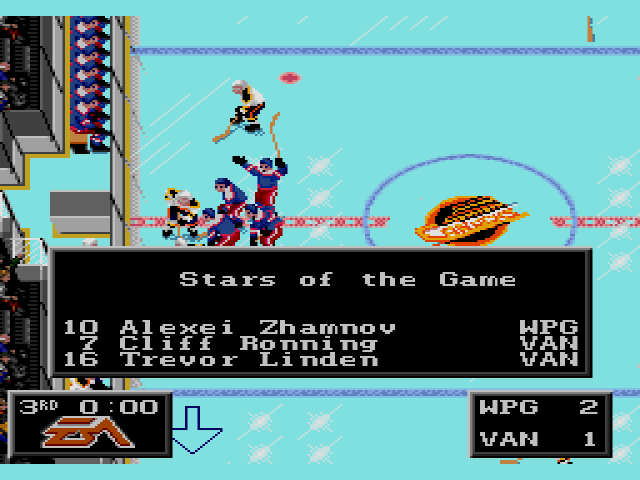
The Nostalgia
If you’re a fan of the NHL or hockey in general, NHL 94 is a rollicking trip down memory lane. The game features a plethora of hockey legends from one of the golden eras of NHL hockey. In addition to the aforementioned Gretzky, Lemieux and Jagr, NHL 94 also included dozens of other superstars and eventual Hall of Famers. Guys like Mark Messier, Ray Bourque, Patrick Roy, Joe Sakic, Ed Belfour, Steve Yzerman, Pavel Bure, Teemu Selanne, Chris Chelios, Paul Coffey, Jeremy Roenick, Doug Gilmour, Brett Hull, Mike Modano and Jari Kurri give the game’s roster a magical, timeless appeal.
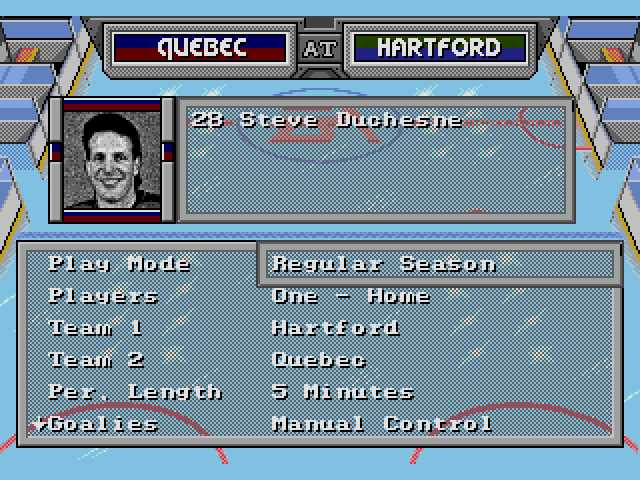
It’s not just the players who are fun to revisit, however. There are also the defunct teams like the Hartford Whalers and Quebec Nordiques that are a blast to go back and play with. There’s nothing like unleashing a Zarley Zalapski slap shot in the old Hartford Civic Center to bring back fond memories of a different era of NHL hockey.
What Doesn’t Hold Up
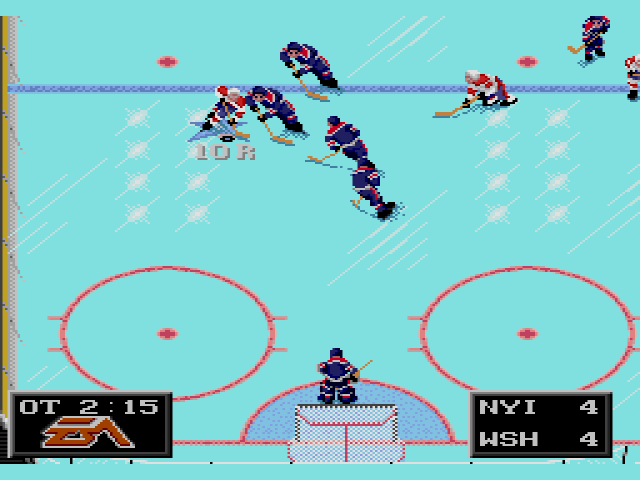
The Gameplay
Hear me out here. Yes, as mentioned earlier, the gameplay is still great in a two-player, head-to-head, party game kind of way. But if you don’t have another real person in the room to play against? Forget it. The AI is terrible and poses little challenge once you rediscover some of the easy ways to score goals. The game modes are extremely limited by modern standards. Forget franchise mode, there isn’t even a season mode (that would be added in NHL 95). There’s no online play (obviously).
The ice surface seems laughably small. The players float with a weightlessness that’s hard to go back to. There’s almost no semblance of strategy or structure to the way the teams play — you can take almost any player end-to-end at any given point. All told, as a single-player experience NHL 94 is good for about 10 minutes before it becomes tiresome.
What’s Interesting
The Player Ratings
One of my favorite parts about NHL 94 is how it used a much wider range of the attribute rating scale than modern games do. Instead of grouping the entire league in the 70-95 overall rating range, NHL 94 had players rated as high as 100 (Mario Lemieux) and as low as 29 (Calgary’s Greg Smyth). Many of the league’s more average players had overall ratings in the high 40s and low 50s, which is exactly how it should be. Granted, those numbers didn’t necessarily translate into a discernible difference on the ice, but it was still nice to see a more logical use of the ratings scale.
(What’s even more interesting is that NHLPA Hockey 93 went even further with the ratings variations, giving poor Tampa Bay defenseman Shawn Chambers an overall rating of one. Yes, ONE. Out of 100.)
Shootout Mode
NHL 94 introduced a shootout mode 12 years before shootouts would actually become a part of the NHL rule book. But unlike real-life shootouts where the puck is only allowed to travel towards the opposing goalie, in NHL 94 you could actually go so far as to circle behind the net and come out the other side before you took a shot on goal. It’s a little strange to see, to say the least.
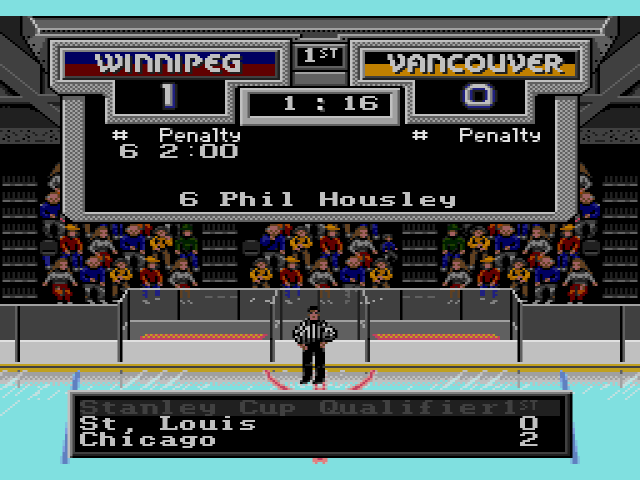
Fun Fact
The player ratings for NHLPA Hockey 93 and NHL 94 were handled by Igor Kuperman, a Russian who at the time worked in the front office of the Winnipeg Jets, my hometown team. The Jets of the late ’80s and early ’90s were well known for their propensity for drafting Russians and Europeans. This draft strategy resulted in the occasional home run (Teemu Selanne) but far more misses (Evgeny Davydov, Sergei Bautin and Igor Ulanov, to name just a few).
Evgeny Davydov played 155 games in his NHL career, recording 79 total points. He’s rated 64 overall in NHL 94, one point ahead of Ray Ferraro, who played more than 1,200 games in the NHL, scoring more than 400 goals and nearly 900 career points. Things were even worse in NHLPA Hockey 93, where Davydov was rated a 75(!) overall, just two points worse than Wayne Gretzky. The same Wayne Gretzky who had 130 points in the 1993-94 season alone.
All of which is to say the ratings may not have been entirely scientific. So take heart, Shawn Chambers.


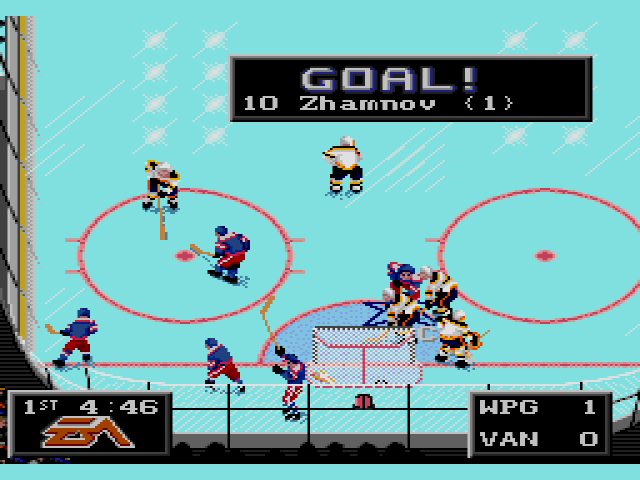

Published: Jan 21, 2020 10:00 am